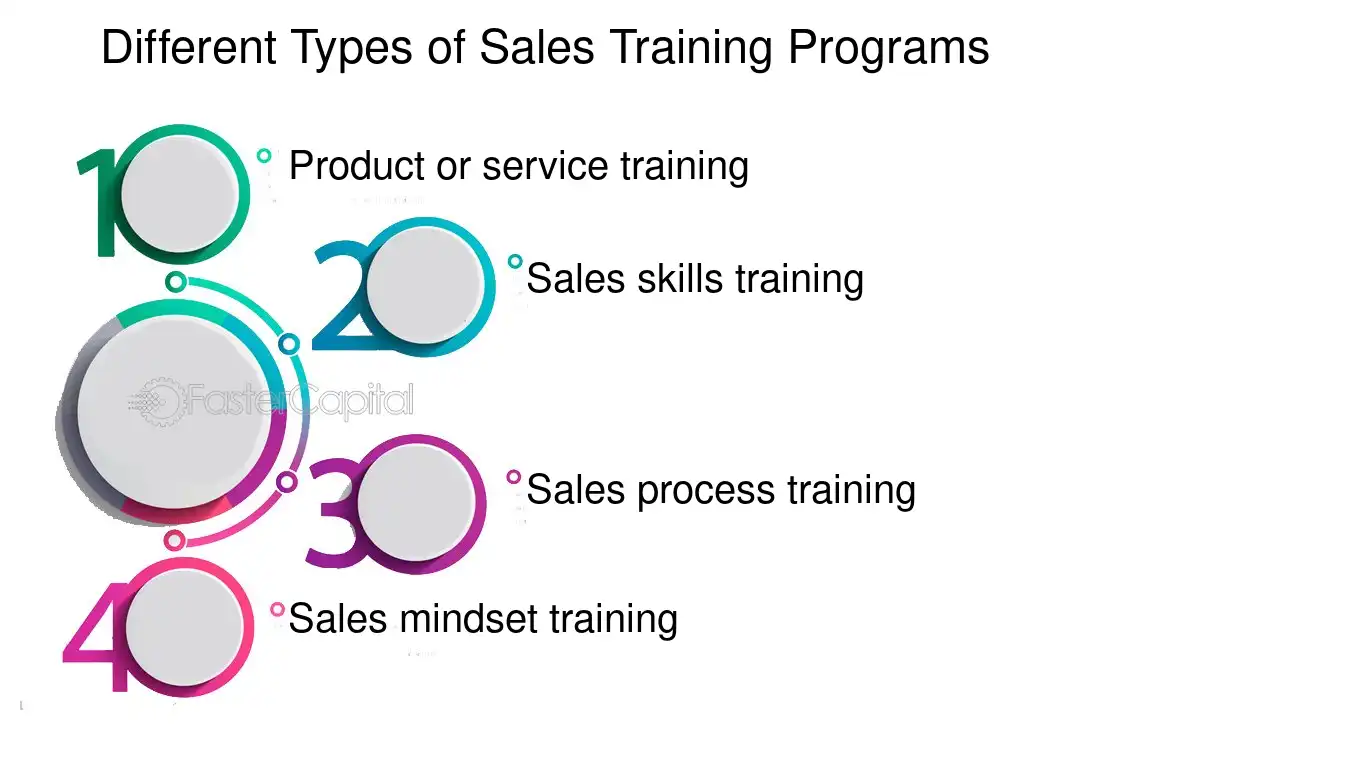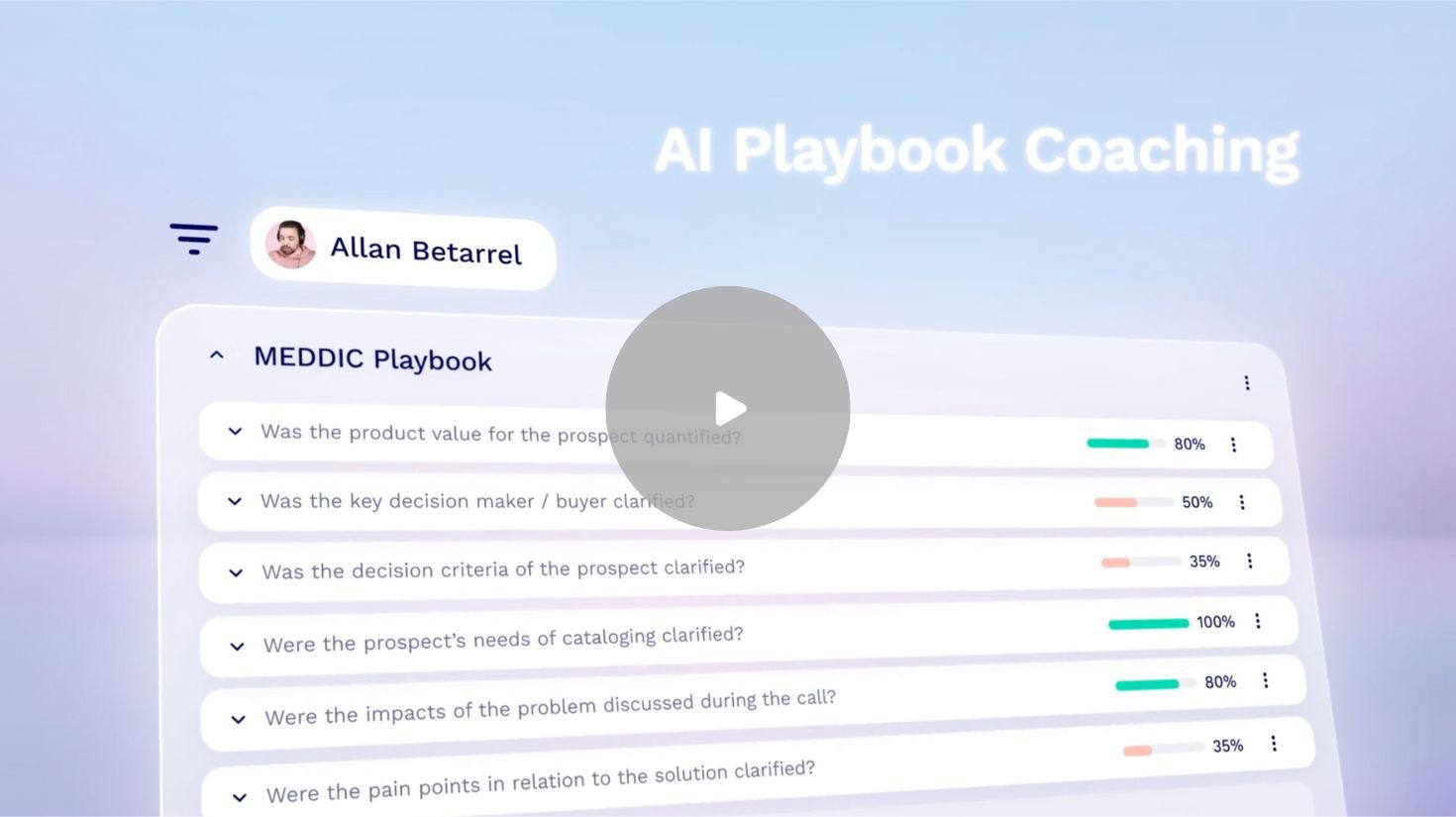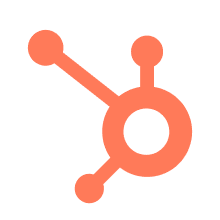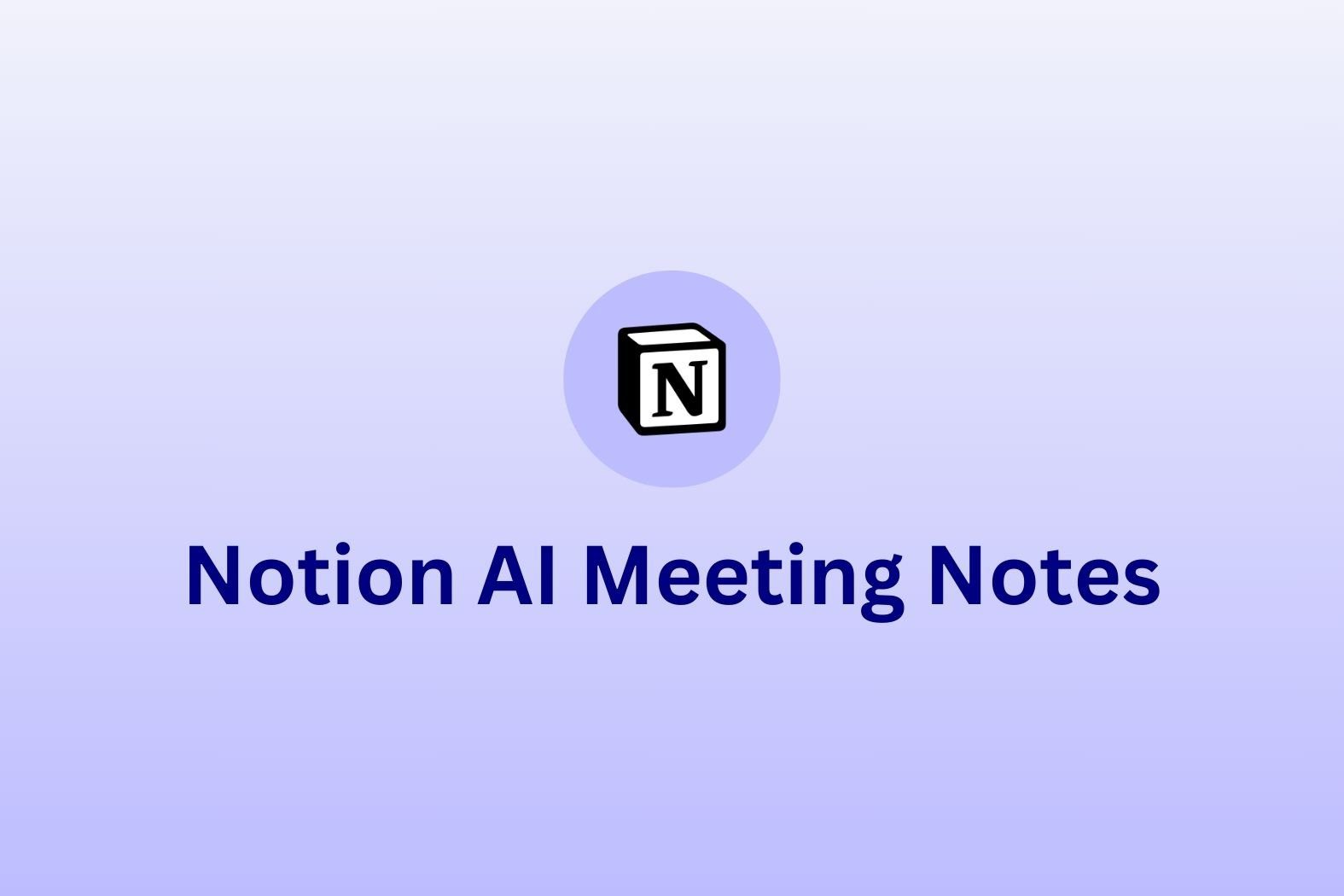Onboarding a sales team works best when new hires can learn from real conversations, not just training manuals.
Meeting recordings provide a direct way for new reps to hear real sales calls, understand objections, and see how experienced colleagues handle different situations. Instead of relying on generic scripts, they can analyze real-world interactions and develop practical skills faster.
With the right tools, meeting recordings become even more valuable. Searchable archives allow reps to find relevant calls, key moments can be highlighted for easy review, and trainers can add notes to guide learning. This makes onboarding more efficient, ensures consistency across the team, and provides a foundation for continuous improvement.
Using real conversations as a training tool helps sales teams ramp up quickly, refine their techniques, and stay aligned on messaging
Training vs. Onboarding – What Is the Difference?
Onboarding a sales team or training one, are distinct yet complementary processes essential for developing a high-performing sales function.
Onboarding
Onboarding is the initial phase where new sales hires are introduced to the company’s culture, processes, and tools. This includes familiarizing them with product knowledge, understanding organizational workflows, and mastering CRM systems. Effective onboarding ensures that new representatives are well-integrated and prepared to begin their roles with a solid foundation. Research indicates that organizations with effective onboarding programs see a 16.2% improvement in quota attainment.
Training
Training, on the other hand, is an ongoing endeavor focused on the continuous development of sales techniques, customer engagement strategies, and closing skills. It involves regular skill enhancement sessions, updates on market trends, and refining approaches to meet evolving customer needs. Continuous training ensures that sales professionals remain adept and competitive in a dynamic marketplace. Notably, companies that invest in training are 57% more effective at sales than their competitors.
Meeting Recordings in Onboarding & Training
Meeting recordings play a pivotal role in both onboarding and training. For onboarding, access to recorded sales calls allows new hires to observe real-life interactions, understand customer objections, and learn effective communication strategies. This exposure accelerates their learning curve by providing practical examples beyond theoretical instruction.
In the context of ongoing training, recorded meetings serve as valuable resources for continuous improvement. Sales teams can review past interactions to identify areas of strength and opportunities for development. Analyzing these recordings facilitates the refinement of sales techniques, ensures consistency in messaging, and promotes a culture of self-evaluation and growth. It’s noteworthy that continuous training can result in a 50% increase in net sales per employee.
Incorporating meeting recordings into both onboarding and training programs enhances the learning experience and leads to improved sales performance and higher employee retention. By showing real-world examples, sales teams are better equipped to connect with clients and achieve their targets.

The Benefits of Learning Through Meeting Records
Meeting records are a powerful tool for training and development in sales teams. Unlike traditional learning methods, recordings offer real-world scenarios, allowing sales reps to refine their skills with practical examples. By using recorded meetings, teams can improve onboarding, enhance consistency, and support different learning styles.
It Supports Different Learning Styles
Every sales rep learns differently. Meeting recordings cater to various learning preferences, making training more effective:
- Kinaesthetic learners – Sales reps who learn by doing can use recordings to role-play scenarios, practicing their responses and refining their techniques in a controlled environment.
- Auditory learners – Listening to top-performing sales calls helps auditory learners absorb tone, pacing, and the nuances of persuasive communication.
- Visual learners – Transcripts, AI-generated summaries, and annotated recordings provide structured references for those who prefer to see key takeaways in written form.
By incorporating different formats, meeting recordings ensure that all team members can absorb information in the way that suits them best.
It Reinforces Real-World Application
Sales success isn’t just about memorizing scripts—it’s about adaptability. Meeting records provide direct exposure to real-life interactions, allowing sales reps to:
- See how experienced colleagues handle objections in real-time.
- Analyze different sales styles and identify what works best.
- Learn from both successful and unsuccessful deals, refining their approach accordingly.
Recorded sales calls help salespeople become more confident and capable in handling complex conversations.
It Accelerates Onboarding and Improves Performance
Getting new sales hires up to speed quickly is a challenge. Meeting recordings shorten the onboarding curve by providing new reps with immediate access to high-quality sales conversations.
- New hires can listen to real sales calls from day one, giving them insight into what great sales conversations sound like.
- Reps can review successful deal-closing calls to understand what differentiates top performers.
- Instead of waiting for shadowing opportunities, new employees can train independently and revisit recordings as needed.
With meeting records, onboarding becomes faster, more efficient, and more engaging for new team members.
It Ensures Consistency Across the Team
Maintaining a standardized sales approach across a team can be difficult, especially in fast-growing organizations. Meeting recordings help ensure that all reps are aligned with the company’s messaging and best practices.
- Recordings provide a single source of truth for messaging and objection handling.
- Managers can use past meetings as reference points to coach and align reps.
- Consistent training ensures that all reps follow the same proven strategies, reducing performance gaps.
By integrating meeting recordings into training, sales teams can build a culture of continuous learning and improvement while maintaining consistency across the organization.
From onboarding to skill development, meeting records are a crucial tool for sales teams looking to improve performance, enhance learning, and drive results.
Types of Meeting Recordings That Are Useful for Training and Onboarding Sales Teams
Meeting recordings are an invaluable resource for sales teams, providing real-world examples of how to handle objections, close deals, and improve customer relationships. From onboarding new reps to refining the skills of experienced sellers, different types of recorded meetings serve distinct purposes. Below are key categories of meeting recordings that can enhance sales training and performance.
1. Internal Training Recordings
Internal sales training sessions focus on improving techniques, aligning team strategies, and refining messaging. These recordings provide structured learning opportunities for both new and experienced reps.
- Sales coaching sessions – Managers or senior sales professionals provide direct feedback and guidance on sales techniques.
- Best practice breakdowns – Top-performing sales calls are analyzed to highlight what works and why.
- Role-playing exercises – Mock sales scenarios help reps refine their approach in a low-pressure environment.
By recording and reviewing these sessions, sales teams can ensure consistency in training, document successful techniques, and provide new hires with proven strategies to follow.
2. Real-Life Sales Calls and Demos
One of the most powerful ways to learn sales is by studying real interactions. Recordings of actual sales calls and demos allow reps to observe firsthand how successful conversations unfold and how challenges are handled.
- Cold calls – Reviewing outbound prospecting calls helps teams refine their approach, improve pitch delivery, and handle objections more effectively.
- Discovery calls – Understanding how top reps identify customer needs and pain points sets a strong foundation for future conversations.
- Negotiation calls – Observing live negotiations helps salespeople learn techniques for handling objections, pricing discussions, and overcoming hesitations.
- Closing calls – Studying successful (and unsuccessful) closing calls helps teams analyze what differentiates a closed deal from a lost opportunity.
Having access to a library of these recordings allows new and existing reps to see different selling styles, learn what works, and apply successful tactics to their own sales efforts.
3. Client Meetings and Feedback Sessions
Understanding customer needs is critical to selling effectively. Sales teams can benefit from recorded client meetings to improve their messaging, refine positioning, and align their approach with customer expectations.
- Customer feedback sessions – Hearing direct insights from customers helps sales teams refine their pitch and highlight the most relevant product benefits.
- Pain point discussions – Analyzing how customers describe their challenges enables sales reps to fine-tune their approach.
- Win/loss analysis – Reviewing post-sale debriefs with customers can reveal why a deal was won or lost, providing insights that can be applied to future opportunities.
By watching these recordings, sales teams can better understand their audience and adjust their strategies accordingly.
4. Customer Success Calls
The sales process doesn’t end when a deal is closed. Customer Success teams have valuable insights into post-sale interactions that can help refine the sales strategy.
- Onboarding calls with new customers – Understanding common challenges during implementation can help sales reps set better expectations.
- Renewal and upsell conversations – Learning how Customer Success teams approach contract renewals and upsells can help sales reps position future deals.
- Support issue resolutions – Seeing how customer problems are resolved can help sales teams anticipate objections and proactively address concerns during the sales process.
By reviewing Customer Success interactions, sales teams can gain a deeper understanding of long-term customer needs and improve their ability to sell with retention in mind.
5. Internal Discussions with Product Teams
Sales and product alignment is essential for effectively communicating value to customers. However, not all product discussions are directly relevant to sales teams. Carefully selecting the most useful sections of these meetings ensures that reps stay informed without being overwhelmed by technical details.
- Product roadmap updates – Sales teams can better position upcoming features if they understand what’s on the horizon.
- Feature enhancement discussions – Learning about customer-driven product changes helps reps address objections related to feature gaps.
- Bug fixes and known issues – Having context on known product challenges enables reps to handle objections more effectively.
- Competitive positioning insights – Understanding how new product developments compare to competitors helps sales reps tailor messaging and strengthen their pitch.
By making these recordings available in a structured way, sales teams can stay aligned with product updates without needing to attend every product meeting.
6. Manager Feedback Sessions
One-on-one coaching is one of the most effective ways for sales reps to improve their skills. Recorded feedback sessions between sales managers and reps provide a valuable resource for continuous learning.
- Call review sessions – Managers analyze recorded sales calls and provide direct, actionable feedback.
- Performance evaluations – Regular check-ins help reps identify strengths and areas for improvement.
- Goal-setting meetings – Tracking progress over time helps ensure reps stay on track with their performance targets.
- Objection-handling workshops – Reviewing how reps navigate difficult objections can help refine sales techniques.
- Pipeline strategy discussions – Managers and reps can review deal progress and strategize next steps to improve closing rates.
- Personalized skill development plans – Tailoring training based on recorded feedback ensures reps focus on the areas that will have the greatest impact on their success.
Recording these sessions allows reps to revisit their feedback, track their improvement, and apply insights to future calls.
Enhancing Meeting Recordings with AI-Powered Coaching Tools
Meeting recordings are no longer just passive resources but active sales tools. With AI-powered coaching tools, they become interactive learning experiences where sales reps can analyze, engage, and improve in real time. Instead of simply watching past sales calls, teams can use AI-driven insights, smart annotations, and metrics to refine their techniques and enhance training effectiveness.

AI Tools Add Value but Don’t Replace Meeting Records
AI-powered tools enhance meeting recordings by making them easier to navigate, analyze, and learn from. However, they don’t replace the value of real sales interactions. Instead, they serve as an enhancement, helping sales teams maximize the usefulness of recorded meetings by providing key insights without requiring hours of manual review.
With AI-driven insights, sales reps can quickly pinpoint the most critical moments in a conversation, focusing on objections, negotiations, and closing techniques without needing to sift through an entire call. Automated note-taking and smart summaries eliminate the burden of manual documentation, ensuring that key takeaways are easily accessible. Instead of passively storing meeting recordings, AI-powered tools make them dynamic, allowing teams to extract actionable learnings and refine their approach.
How AI Improves Learning
By integrating AI-powered coaching tools with meeting recordings, sales teams gain deeper insights into their performance. AI doesn’t just capture the conversation—it analyzes it in real time, offering feedback that would otherwise take hours of manual review. It can detect subtle cues like shifts in tone or hesitation, helping sales reps refine their closing strategies.
Beyond just identifying key moments, AI-generated feedback pinpoints areas for improvement, such as speech pacing, objection handling, and engagement levels. Some tools even allow reps to search for specific scenarios—like pricing discussions or competitor mentions—without needing to comb through an entire call. With these capabilities, meeting recordings evolve from simple archives into interactive coaching resources that actively support sales performance over time.
Comparison to Traditional Call Reviews
Before AI-powered coaching tools, reviewing calls was a labor-intensive process. Sales managers and reps had to listen to full recordings, manually take notes, and identify patterns—often spending significant time on repetitive tasks. AI streamlines this process by automatically detecting critical moments, highlighting sales techniques in action, and generating instant summaries.
Rather than requiring hours of review, AI-enhanced call analysis allows sales teams to access key takeaways instantly. Managers can focus on providing strategic coaching instead of sifting through long recordings, while reps can revisit key insights whenever needed. This shift not only saves time but also ensures that every meeting recording is a valuable, easy-to-use learning tool.
How to Build a Sales Training Library Using Meeting Records & AI
A well-organized sales training library ensures that meeting recordings become more than just archives—they become an accessible, interactive learning resource. With AI-powered search and note-sharing features, sales teams can quickly find relevant recordings, extract insights, and improve performance with structured feedback.
1. Categorize Use Cases for Sales Meeting Recordings
To maximize the value of meeting recordings, categorize them based on different sales situations. AI-powered search functions allow sales reps to instantly locate relevant training materials.
- Sales stage: Prospecting, discovery, negotiation, closing.
- Product type: Categorize by product line for role-specific training.
- Customer type: Enterprise, mid-market, SMB, or industry-specific cases.
- Objections faced: Organizing by objections (pricing, competitors, urgency) helps reps refine their approach.
- AI-powered search: AI-driven tools allow reps to search by scenario, highlighting relevant moments without needing to review full recordings.
By using smart tags, folders, and categorized playlists, sales teams can quickly access the insights they need without wasting time searching through lengthy recordings.
2. Identify Best-in-Class Clips for Each Category
Building a strong sales training library depends on contributions from experienced team members. Encouraging sales reps to share valuable recordings transforms static resources into a dynamic, evolving knowledge base.
To maintain quality, sales leaders play an essential role in curating and verifying top-performing calls. This ensures that only the most effective strategies are included in training materials. By fostering a culture of knowledge sharing, teams can continuously refine their approach and align on the most successful sales techniques.
With tools like tl;dv, teams can take advantage of hidden notes, Slack integration, and the ability to tag specific people, making the process of sharing and learning even more interactive.
3. Keep Meetings Organized in Folders for Easy Access
A well-structured system ensures sales reps can find the right training material at the right time. Organizing recordings into labeled folders—by sales stage, product type, or key objections—makes it easier for teams to pull relevant insights when they need them. Using AI-powered search and smart tagging further enhances accessibility, reducing time spent sifting through lengthy archives.
4. Create Playlists From Clips for Each Use Case
One of the best ways to streamline training is by using tools like tl;dv’s Clips & Reels. Instead of watching entire meetings, sales reps can review curated clips of key moments—like handling objections or closing a deal. These can be grouped into playlists, helping new hires focus on what really matters without getting lost in long recordings. For new hires, a structured approach to learning is key. Instead of overwhelming them with a random selection of call recordings, companies can create tailored onboarding playlists that guide them through sales training step by step.
Organizing these recordings by experience level—starting with fundamental sales conversations before progressing to more complex negotiations—helps new reps develop confidence at a manageable pace.
A well-structured onboarding process also ensures that training is relevant to each role. SDRs, AEs, and account managers can follow custom learning pathways designed specifically for their responsibilities, making their training more targeted and efficient. This structured approach not only accelerates onboarding but also ensures that new hires focus on the most impactful learning materials from day one.
5. Keep Playlists Updated With Fresh Content
A sales training library isn’t static—it should evolve as the team refines its approach. Regularly updating playlists ensures that new reps learn from the latest successful sales calls rather than outdated tactics.
One way to keep on top of this is to schedule regular content reviews (e.g., every quarter) to ensure training clips remain relevant. Remove outdated recordings, add fresh examples, and update playlists to reflect evolving customer needs and sales strategies.
6. Add Playlists and Playbooks to Onboarding Documentation
Playlists and structured sales playbooks are most effective when integrated directly into onboarding materials. Embedding curated clips into training manuals, internal wikis, or LMS platforms makes them instantly accessible to new hires. By organizing playlists into structured playbooks, companies can ensure new reps follow a clear learning path, from foundational skills to advanced techniques.
This is particularly useful in the first weeks of a rep’s time with a business, allowing managers to track progress, assign targeted Reels, and integrate AI-powered coaching into structured playbooks. AI-driven insights can highlight areas for improvement, dynamically assigning Reels and coaching tasks based on performance gaps.
These playbooks should include:
- Curated recordings of key sales calls for different scenarios.
- Clips & Reels that highlight best practices, objections, and closing strategies.
- Guided annotations from managers to provide context and feedback.
A structured approach to onboarding helps standardize training, ensures consistency across the team, and gives reps the tools they need to succeed.
7. Use AI-Powered Coaching & Hidden Annotations to Improve Rep Performance
AI-powered coaching and hidden annotations make meeting recordings an interactive and personalized learning experience. Instead of reps seeing every piece of feedback in real time, managers can leave notes that only become visible when needed—allowing for structured coaching without overwhelming or distracting the team.
AI-driven playbooks work in tandem with these coaching tools, allowing managers to track rep performance, suggest targeted Clips & Reels for learning, and deliver feedback directly inside each meeting recording. Early on, managers can provide more structured, step-by-step coaching, gradually transitioning reps to self-directed learning as they improve.
How This Enhances Training:
- Adaptive feedback – AI coaching allows managers to set specific training criteria based on company sales methods, ensuring reps get feedback relevant to their role.
- Hidden annotations – Managers can leave structured coaching notes inside recordings, only revealing them when reps reach key milestones. This prevents overwhelming new hires and ensures feedback is given at the right moment.
- Targeted skill development – Sales managers can tag key moments in recordings, linking reps to relevant playbooks, Clips & Reels, or additional training resources.
- Performance tracking – AI-driven insights help managers monitor trends, assess improvement areas, and fine-tune coaching strategies over time.
By combining hidden annotations with structured AI coaching, sales teams create an on-demand, adaptive learning system that improves rep performance without adding unnecessary complexity or noise.
Making Meeting Records the Backbone of Sales Training
Meeting recordings really are one of the most effective tools for training and onboarding sales teams. They provide real-world learning opportunities that go beyond traditional training materials, allowing sales reps to observe successful techniques, handle objections more effectively, and continuously refine their approach. The added bonus is that there is very little financial impact to any business as well, as these are daily actions and happenings within a business so are likely to drive an incredibly higher ROI than other types of training.
Recorded meetings allow sales reps to learn from actual conversations, improving their ability to engage with customers and close deals. AI-powered tools enhance this process by making recordings more searchable, allowing key moments to be highlighted, and facilitating private note-sharing for targeted coaching. However, while AI improves accessibility and efficiency, the foundation of great sales training remains real conversations and human insights.
A structured yet adaptable approach to training ensures that every sales rep benefits from meeting recordings. A well-organized library of calls provides consistency in messaging while allowing individuals to learn at their own pace. New hires can ramp up quickly by reviewing key sales interactions, while experienced reps can continue refining their skills by studying advanced negotiations and customer interactions.
By combining meeting records with AI-enhanced tools, sales teams can create a scalable, high-impact training program that evolves with their needs. This approach ensures that onboarding is faster, coaching is more effective, and the entire team stays aligned on best practices.
Start using meeting recordings and AI-powered tools to optimize your sales training strategy. Whether you’re onboarding new reps, refining sales techniques, or improving team performance, structured meeting records make the difference. It’s time to turn every conversation into a learning opportunity.





